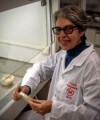Actualidad
Programmed Cell Death Is Largely Responsible for Postharvest Senescence
Programmed cell death is a cellular suicide process similar to apoptosis, documented in all eukaryotes, and acts as a survival mechanism in the presence of environmental stress challenges of both abiotic and biotic nature
Every day, consumers increase their demand for fresh horticultural products, but most of these are highly perishable. The shelf life depends on their phyto-genetic background, pre-harvest growth conditions, physiological and developmental stage at harvest, harvesting practices, postharvest processing, packaging, handling during transport, and storage environment.
Treatments to Maintain Quality
To maintain their quality in the supply chain and avoid the degradation of health-promoting components, perishable products undergo various short-term or long-term physical and chemical treatments and are stored under specific conditions.
Widely accepted practices include low-temperature storage in controlled atmospheres with reduced oxygen levels (< 5%) and elevated carbon dioxide levels (up to 10-15%). In addition to these methods, procedures involving treatments with a variety of soluble and gaseous chemical compounds, antimicrobial agents, carbohydrate polymers (such as chitin, etc.), thermal treatments, high pressure, UV irradiation, and modifications in the spectrum and intensity of light during the photoperiod are being applied during storage.
Physiological Processes Involved in Deterioration
Among the major physiological processes underlying postharvest deterioration of fresh produce are early ripening and premature senescence.
Various storage treatments, although beneficial for delaying ripening and reducing respiration rate and ethylene production, as well as aging and associated metabolic changes, can cause side effects such as cold injuries, chemical-induced phytotoxicity leading to metabolic alterations and consequently physiological anomalies in cells and tissues.
Postharvest senescence can be further accelerated by factors such as mechanical damage during harvesting and the accumulation of excess ethylene due to insufficient ventilation, lack of light during transport and storage, ultimately resulting in visible signs of deterioration (yellowing, browning, necrotic areas, surface scalding, among others).
Under hypoxic conditions, fermentation products such as ethanol and acetaldehyde may accumulate and induce detrimental effects like internal browning and off-flavors. Additionally, excess moisture contributes to microbial development and increases the risk of deterioration, negatively impacting quality.
Several research studies have addressed the physiological, biochemical, molecular, and genetic background of postharvest deterioration of perishable crops, and numerous techniques have been suggested to maintain quality and reduce waste in the supply chain.
Macroscopic symptoms of quality decline are well known, but the underlying processes of postharvest disorders at the cellular level are still not well understood.
What Causes Cellular Collapse?
Among the processes leading to tissue collapse are: the expression of genes associated with senescence and oxidative stress due to mitochondrial and chloroplast electron transport disruption, failure of the antioxidant defense system, protein degradation, changes in phospholipid metabolism, activation of hydrolytic enzymes, and signaling cascades.
In deteriorated products, cells in certain areas have been observed to have died and sometimes degraded to the point of seeming to have disappeared. The exuded liquid in these circumstances can leak into intercellular spaces, causing watery lesions and loss of integrity in adjacent tissues.
Programmed Cell Death
Accumulated experimental data indicate that postharvest deterioration involves programmed cell death, a cellular suicide process similar to apoptosis, documented in all eukaryotes and genetically determined as an essential part of normal development and as a survival mechanism in the presence of stressful environmental challenges of both abiotic and biotic nature.
Programmed cell death is involved in postharvest senescence and deterioration of fresh horticultural products and is initiated through vacuolar autophagic processes culminating in the destruction of individual cells that lead to visual symptoms.
Identifying processes that induce programmed cell death during storage may be a promising tool for predicting and controlling the postharvest quality of fresh products, and for developing new or optimized preservation strategies that address this process.
Sources
Iakimova, E. T.; Ty, A. J.; Maarten, L.A.T.M.; Hertog, B. M.; Nicolaï, E.; Woltering, J. (2024). Programmed cell death and postharvest deterioration of fresh horticultural products. Postharvest Biology and Technology, 214: 113010.
Image
https://vitat.com.br/fruta-feia-ou-estragada/ Accessed on 25/07/2024













